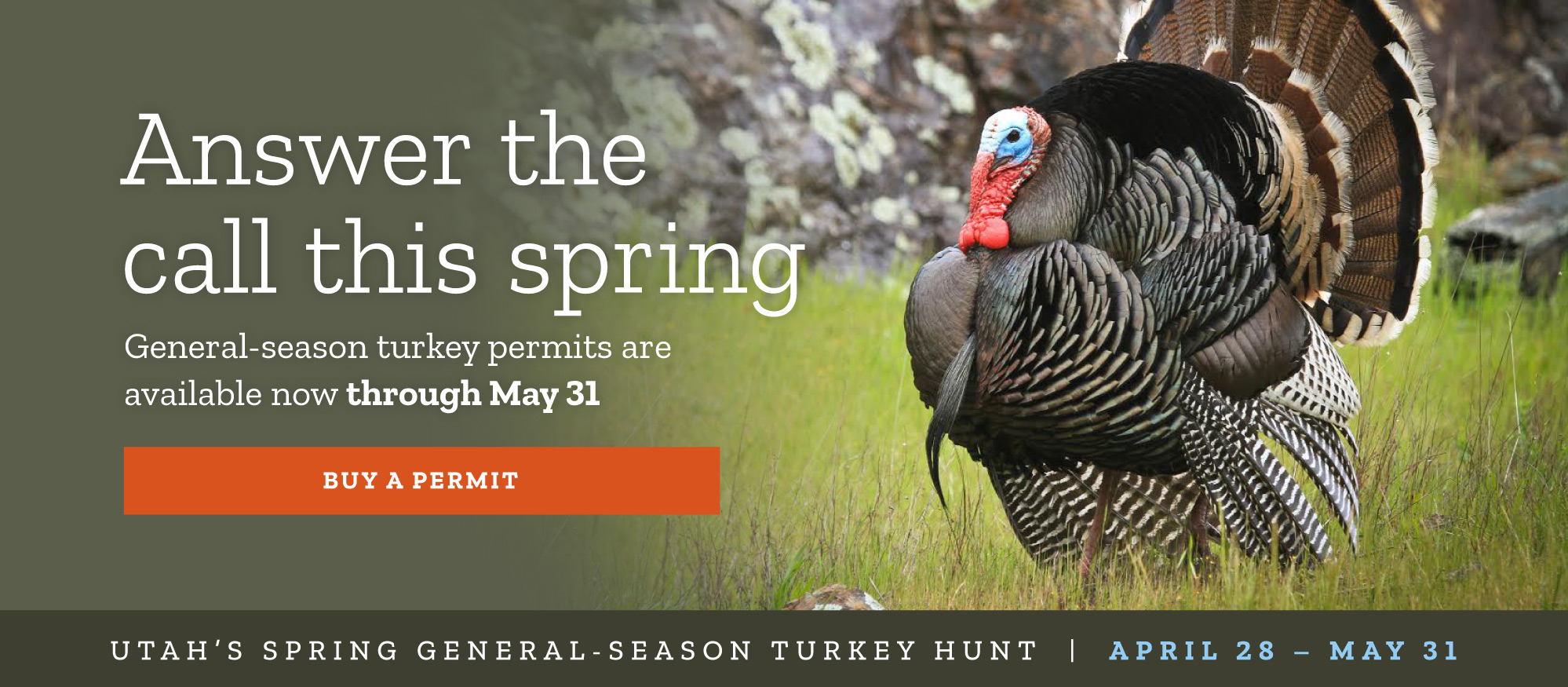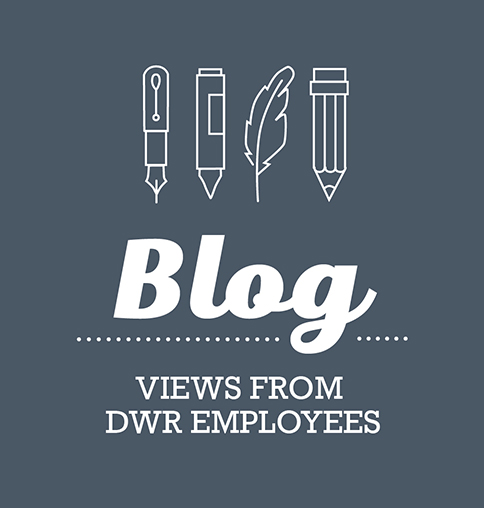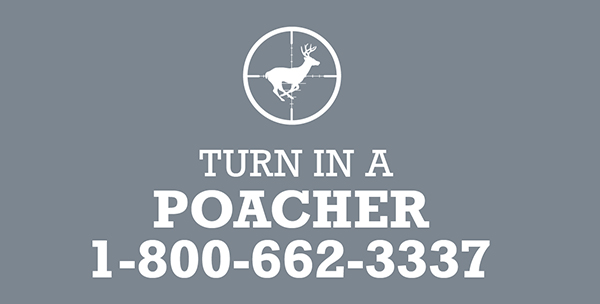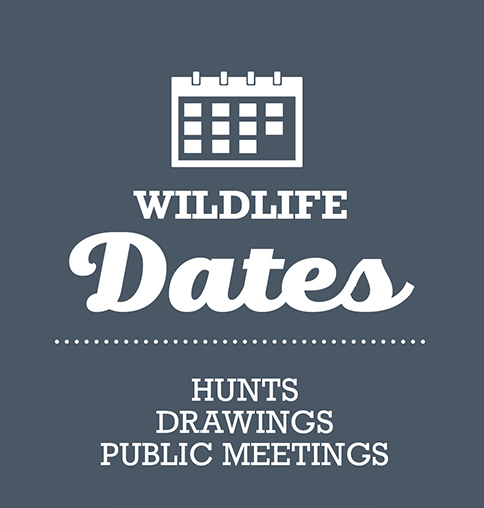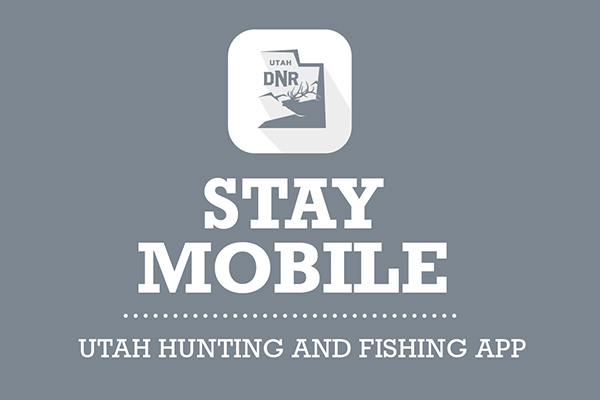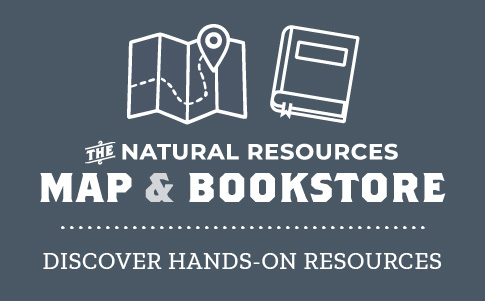Basic requirements you'll need to know
Familiarize yourself with the the 2018 antlerless hunt.
Are you planning to hunt antlerless big game in Utah this year? Before you apply for a permit, make sure you:
- Meet Utah's age requirements
- Determine if you are a resident or nonresident
- Comply with Utah's hunter education requirements
- Have a current hunting or combination license
Are you old enough?
— Utah Code § 23-19-22
Before you can buy a hunting license and apply for an antlerless permit, you must meet the following requirements:
If you're 11 years old — but you'll be 12 by Dec. 31, 2018 — you may apply for and obtain an antlerless deer, antlerless elk, antlerless moose or doe pronghorn permit (if available). However, you cannot hunt until the day you turn 12. Be sure to check hunt dates before applying. All sales are final.
All hunters under the age of 16 must be accompanied in the field by a parent, legal guardian or responsible person 21 years of age or older.
Are you a resident?
— Utah Code § 23-13-2(37)
Before you apply for a big game hunt, it's important to know whether you are a legal resident of the state of Utah.
You are a resident if you have had a fixed permanent home and principal establishment in Utah for six consecutive months immediately preceding the purchase of a license or permit, and you do not claim residency for hunting, fishing or trapping in any other state or country.
If you purchase a resident license for hunting, fishing or trapping in any other state or country, then your Utah resident license or permit is invalid.
What if I leave Utah temporarily?
You retain your Utah residency if you leave Utah to serve in the armed forces of the United States — or for religious or educational purposes — and you do not claim residency for hunting, fishing or trapping in any other state or country.
What if I serve in the armed forces?
Members of the armed forces of the United States and their dependents are residents as of the date the member reports for duty under assigned orders in Utah, if:
- The member is not on temporary duty in Utah and does not claim residency for hunting, fishing or trapping in any other state or country.
- The member presents a copy of his or her assignment orders to a DWR office to verify the member's qualification as a resident.
What if I'm a student?
A nonresident attending an institution of higher learning in Utah as a full-time student may qualify as a resident if the student has been present in Utah for 60 consecutive days immediately preceding the purchase of the license or permit and does not claim residency for hunting, fishing or trapping in any other state or country.
What if I own property in Utah?
You do not qualify as a resident if you are an absentee landowner paying property tax on land in Utah.
Is hunter education required?
— Utah Code § 23-19-11 & Utah Admin. Rule R657-23
If you were born after Dec. 31, 1965, you must provide proof that you've passed a hunter education course approved by the DWR before you can apply for or obtain a hunting license or a big game permit.
The only exception to this law is for individuals who are participating in the DWR’s Trial Hunting Program.
Proof of hunter education
You can prove that you’ve completed hunter education by obtaining a hunter education card (called a “blue card” in Utah), or if you have a verified hunter education number on file with the DWR. The number is assigned when you complete hunter education and your blue card is issued.
How to take hunter education
To get started, visit our Hunter education page. You’ll see links to a complete list of online and instructor-led hunter education courses. Follow the instructions on the site to sign up for a course.
If you need assistance, please contact your local DWR office or call 801-538-4727.
When you complete the course, your instructor will sign your course certificate, which will then become your hunting license. With a valid hunting license, you can also apply for or obtain permits in the DWR’s hunt drawings.
Approximately four to six weeks after you complete the course, you will receive your blue card by mail.
You should also keep the following in mind:
- Hunters under the age of 16 must be accompanied by an adult while hunting.
- All hunting regulations (such as season dates and bag limits) will apply.
- Hunters who are planning to hunt out of state should allow enough time for their hunter education card to arrive in the mail.
Are you new to Utah?
If you become a Utah resident, and you've completed a hunter education course in another state, province or country, you must obtain a blue card before you can apply for or buy a resident hunting license or a resident antlerless permit. You can obtain a Utah blue card at any DWR office by providing proof that you've completed a hunter education course approved by the Division.
Do you have a license?
— Utah Code §§§ 23-19-1, 23-19-22 and 23-20-3
You must have a current Utah hunting or combination (hunting and fishing) license to apply for any antlerless permits, bonus points or preference points. You will have the opportunity to purchase a license while applying for permits or points. Licenses are also available online and from license agents and DWR offices.
Be sure to take a look at the date on your license before you apply for any permits or points. As long as your license is valid on the date you submit your application, you don't have to purchase a new license for the actual hunt.
For example, assume that your license expires on June 13, 2018. If you apply before that date, you do not have to purchase a new license for your hunt in the fall. All hunting and combination licenses are valid for 365 days from the date of purchase.
Carry your permit
If you are successful in obtaining an antlerless permit, you must have it on your person while hunting. You cannot alter your license or permit, nor can you sell, transfer or loan either of them to another person.
Planning your Utah's 2018 antlerless hunt
Information you'll need to apply for a 2018 permit.
Are you interested in hunting an antlerless big game animal during the 2018 season? Here's the information you'll need to apply for a permit.
- Learn when you can apply for a permit.
- Find out what's new and other important information about the 2018 season.
- Review antlerless season dates, hunt tables and permit fees.
- Make sure you meet the basic requirements to obtain a permit.
- Learn how to obtain a permit.
APPLY FOR A PERMIT
Emergency guidebook changes
— Important changes and corrections made after the guidebook was printed.
The following emergency change has been made and is in effect beginning July 26, 2018:
Private-Lands-Only Antlerless Elk Permits – South Slope, Diamond Mtn/Vernal and South Slope, Bonanza/Vernal (Uintah and Daggett Counties)
Effective July 26, 2018, an administrative error led to the South Slope, Diamond MTN/Vernal Unit being allocated 300 Private-Lands-Only antlerless elk permits. However, the intended unit is the South Slope, Bonanza/Vernal.
There is very little agricultural land on the Diamond Unit and it is managed as a Limited Entry Bull unit. Therefore, the unit is not appropriate for a Private Lands Only antlerless elk hunt and may interfere with Limited Entry management objectives. Additionally, the elk population on Diamond Unit has been decreasing and is below objective. Allocating antlerless elk permits through the Private Lands Only program in addition to those permits already approved by the Wildlife Board may be detrimental to the population.
The South Slope, Bonanza/Vernal unit should be allocated the 300 permits as intended because much of the private property on this unit are agricultural lands along the Green River where landowners are experiencing elk depredation. Hunting pressure will hopefully move elk off of these lands and to areas with less human-wildlife conflict.
Except for other emergency changes made since January 1, 2018 all other rules established in the 2018 Antlerless Application Guidebook remain in effect.
Application dates
You can apply online for an antlerless permit from May 31–June 21, 2018. The pages linked above will provide all of the information and tools you need in order to apply.
You'll be emailed your drawing results on or before July 12, 2018. You can also learn your drawing results online, by calling 1-800-221-0659 or contacting a DWR office during business hours. To protect your privacy and to comply with changes in governmental records access laws, you'll receive access to only your own drawing results.
What's new this year?
New hunts: For the 2018 season, the Utah Wildlife Board has approved new hunts for antlerless deer, antlerless elk, doe pronghorn and cow moose. See a list of new hunts for 2018.
Changes to the Hunter Mentoring program: The Utah Wildlife Board recently approved substantial changes to the Hunter Mentoring program. Learn more about the changes and how to participate in the program.
Unit boundary and name changes: Many antlerless hunt unit boundaries and names have changed this year. See detailed hunt boundary information.
Other things to keep in mind
Obtain up to three elk permits: You may obtain up to three elk permits per year — as long as at least two of the permits are for antlerless elk—but you can only apply for or obtain one antlerless elk permit in the drawing.
Check the Utah Hunt Planner: The Utah Hunt Planner is an online tool you can use to be better prepared for your next Utah hunt. It contains in-depth information on Utah's antlerless hunting units, including notes from the managing biologists and details about the units’ antlerless big game populations, accessibility, habitat, safety and weather.
Review harvest data from previous years: The antlerless harvest data from previous years may be useful as you decide where to apply for permits.
Private-lands-only antlerless elk permits: This year, the DWR will again offer private-lands-only antlerless elk permits. These permits are only valid on private lands on select hunting units. Do not purchase one of these permits without knowing the laws that regulate hunting on private lands.
Big Game Field Regulations Guidebook: All big game field regulations — for both antlered and antlerless animals—are in the 2018 Utah Big Game Field Regulations guidebook. Printed copies will be available from license agents and DWR offices in early June.
Antlerless harvest reporting
If you obtain an antlerless permit this year, don't forget complete a harvest report after your hunt ends.
Visit the report your game harvest page and click the appropriate button. Then, you can log in and complete your harvest report.
If you prefer to complete your harvest report over the phone, call 1-800-221-0659. The line is staffed 24 hours per day, seven days a week.
Hunting license required: Before you can apply for a 2018 antlerless permit, bonus point or preference point, you must have a valid Utah hunting or combination license. You can purchase a license today or when you apply for an antlerless permit.
Apply for permits online or by phone: If you plan to hunt antlerless big game in Utah this year, you must apply for a permit online or by phone no later than June 21, 2018. There's an 11 p.m. MDT deadline for online applications and a 5 p.m. MDT deadline for phone applications. Apply online, beginning May 31, or call any DWR office.
Flexibility in using antlerless elk permits: If you obtain two antlerless elk permits for the same area — but the permits are for different seasons — you may harvest both elk during the same season. And don't forget that you can use your antlerless permit during your buck or bull season, as long as it's for the same area. See the information box for details.
Opportunity for youth: Twenty percent of the permits for antlerless deer, antlerless elk and doe pronghorn have been reserved for hunters who will be 17 or under on July 31, 2018.
Season dates, hunt tables and boundary maps
Season dates vary, depending on the species and the area. For season date listings, see the 2018 antlerless hunt tables:
Permit fees
| Permit |
Resident |
Nonresident |
| Antlerless deer |
$30 |
$93 |
| Two-doe deer |
$45 |
$171 |
| Antlerless elk control |
$30 |
$93 |
| Antlerless elk (general season) |
$50 |
$218 |
| Antlerless elk (private lands only) |
$50 |
$218 |
| Antlerless moose |
$213 |
$713 |
| Doe pronghorn |
$30 |
$93 |
| Two-doe pronghorn |
$45 |
$171 |
| CWMU antlerless deer |
$30 |
$93* |
| CWMU two-doe deer |
$45 |
$171* |
| CWMU antlerless elk |
$50 |
$218* |
| CWMU doe pronghorn |
$30 |
$93* |
| CWMU two-doe pronghorn |
$45 |
$171* |
Know the rules
These antlerless pages summarize some of Utah's big game hunting laws and rules.
Under many of the headings on these pages, you'll see code references—such as Utah Code § 23-20-25 and Utah Administrative Rule R657-5-24—that are linked to the detailed statute or rule that underpins the summary. If you have questions about a particular subject, take a minute to click the links and read the rules.
You are also welcome to call or visit the nearest DWR office if you have additional questions. For an in-depth look at all of Utah's big game hunting laws and rules, visit the Utah Division of Wildlife Resources Administrative Rules web page.
Who makes the rules?
The Utah Wildlife Board passes the rules and laws summarized in this guidebook.
There are seven board members, and each serves a six-year term. Appointed by the governor, board members are not DWR employees.
The DWR's director serves as the board's executive secretary but does not have a vote on wildlife policies.
Before board members make changes to wildlife rules, they listen to recommendations from DWR biologists. They also receive input from the public and various interest groups via the regional advisory council (RAC) process.
If you have feedback or suggestions for board members, you can find their contact information online.
Wildlife Board members
- Kirk Woodward — Chair
- Byron Bateman — Vice Chair
- Mike Fowlks — DWR Director & Executive Secretary
- Kevin Albrecht
- Calvin Crandall
- Steve Dalton
- Karl Hirst
- Donnie Hunter
